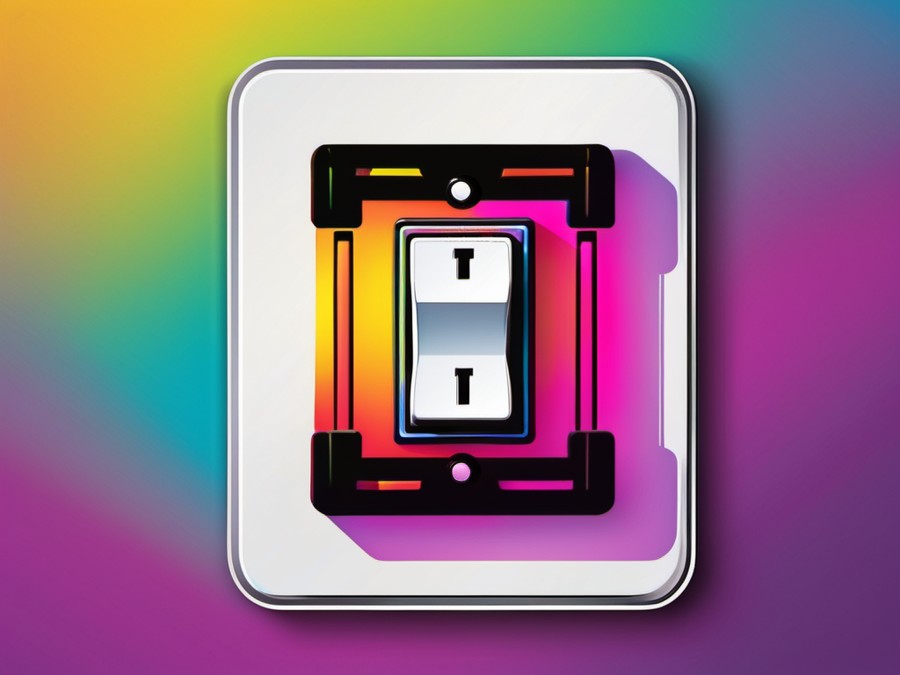· Charlotte Will · Switches · 7 min read
What is a Push Button Switch and Its Common Applications?
Discover the ins and outs of push button switches, their types, applications, and installation tips. Learn how to choose the right switch for your needs and explore safety considerations and innovative trends in this comprehensive guide.

Push button switches are ubiquitous in our daily lives, from turning on the lights to starting a car. But what exactly are they, and how do they work? Let’s delve into the fascinating world of push button switches.
Understanding Push Button Switches
What are Push Button Switches?
A push button switch is a simple but essential electrical device that initiates or controls an electric circuit through physical contact. They are often small, easy to use, and can be found in a variety of settings. Push button switches are commonly used to turn things on or off, and they can be momentary (PTM) or latching.
How Do Push Button Switches Work?
Imagine a simple on/off switch. When you press the button, it completes an electrical circuit, allowing current to flow from one terminal to another. When you release the button, the circuit opens, and the current stops flowing. Now, let’s break this down further into two main types:
- Momentary Push Button Switches: These are the most common type. They are usually spring-loaded and return to their original position when released.
- Latching Push Button Switches: Also known as toggle switches, these remain in the position you set them to until you change it manually.
Key Features of Push Button Switches
- Lifespan: The number of times a switch can be activated before it fails.
- Current and Voltage Ratings: These indicate the maximum current and voltage a switch can handle.
- Contact Material: Often made of silver or nickel, which conducts electricity and minimizes wear.
- Sealing: For outdoor or harsh conditions, switches may have seals to prevent water and dust from damaging the internal components.
Types of Push Button Switches
Momentary Push Button Switches
PTM switches are typically used for temporary actions. When pressed, they complete the circuit and perform an action until released, like a car horn or a doorbell.
Latching Push Button Switches
These switches are designed to stay in the position you set them until manually changed. Think of a light switch at home—once turned on, it stays on until you flip it off. Latching switches can be further divided into:
- Normally Open (NO): These start in an open position and close the circuit when activated.
- Normally Closed (NC): These start in a closed position and open the circuit when activated.
Common Applications of Push Button Switches
Home Automation
In today’s smart homes, push button switches are essential for controlling various devices. From lighting control systems to managing appliances, they offer a simple yet effective way to automate your home. For more insights into smart light switches, check out our article on What is a Smart Light Switch and How Does It Work?.
Industrial Machinery
In industrial settings, push button switches play a critical role in safety and operation. They are often used as emergency stop buttons, ensuring machines can be quickly halted in case of danger. Control panels for equipment operation also utilize push button switches to enhance usability and efficiency.
Electronic Devices
From your smartphone to your laptop, push button switches are integral to powering and controlling a vast array of electronic devices. They can be used for power buttons, volume control, mute functions, and other operations that require quick activation.
Medical Equipment
In medical settings, push button switches are vital for patient care and safety. They can be found in alarm systems to alert medical staff, nurse call buttons for immediate assistance, and control panels on medical equipment. For more information on safety in medical settings, see our article on What is a DIN Rail Enclosure and Its Applications?.
Vehicles and Transportation
Push button switches are prevalent in vehicles, serving various functions from ignition to interior controls. For instance, the starter switch in a car is a critical component that initiates the engine. In transportation systems like elevators, push button switches are used to control doors and movement between floors.
Choosing the Right Push Button Switch for Your Needs
Factors to Consider
- Operating Environment: Indoor or outdoor use can affect the type of switch you need. Outdoor switches often have seals to protect against water and dust.
- Required Lifespan: The number of activations a switch can handle before failing. This is important for high-use applications like manufacturing equipment.
- Current and Voltage Ratings: Matching the switch to your electrical requirements ensures it won’t overheat or fail.
Popular Brands and Models
Several reputable manufacturers offer high-quality push button switches. Brands like Omron, Panasonic, and Schneider Electric provide a range of options suited for different applications. Choosing the right model depends on your specific needs, such as durability, lifespan, and electrical ratings.
Installation and Maintenance Tips
How to Install a Push Button Switch
Installing a push button switch is generally straightforward:
- Choose the Location: Place the switch where it’s easily accessible and visible.
- Wire Connections: Connect the wires to the terminals, ensuring proper polarity (usually indicated on the switch).
- Secure Mounting: Mount the switch to a panel or wall using screws or adhesive, depending on the switch type.
Troubleshooting Common Issues
While push button switches are reliable, issues can occur. Here’s how to troubleshoot some common problems:
- Switch Not Working: Check the wiring for any loose connections or damage. Ensure the switch is compatible with your electrical system.
- Switch Activating Too Easily or Not at All: This could be due to wear and tear. Replacing the switch may be necessary if it’s old or damaged.
Safety Considerations with Push Button Switches
Electrical Safety Guidelines
Working with electrical components always requires caution:
- Proper Wiring and Insulation: Ensure all connections are secure and insulated to prevent short circuits.
- Safety Gear: Use appropriate safety gear, including insulated gloves and eye protection.
Usages in Hazardous Environments
For environments with explosive materials or high moisture, IP ratings (Ingress Protection) are crucial. Switches with high IP ratings are designed to withstand harsh conditions safely.
Innovations and Trends in Push Button Switches
Smart Switches and IoT Integration
The rise of smart homes has led to the development of smart push button switches. These can be integrated with IoT devices, allowing for voice control and automation. Imagine controlling your lights or appliances with a simple voice command—the future is here!
Eco-friendly Options
Environmentally conscious consumers and businesses are shifting towards eco-friendly push button switches. These switches are designed to be energy-efficient, minimizing their environmental impact while providing reliable performance.
Conclusion
Push button switches are indispensable in our daily lives, from homes to industrial settings. Understanding their types and applications can help you make informed decisions when it comes to choosing the right switch for your needs. Whether you’re automating your home, controlling machinery, or managing medical equipment, the right push button switch can make all the difference.
FAQs
What is the difference between a momentary and a latching switch?
A momentary switch, also known as Push-to-Make (PTM), remains active only while pressed. In contrast, a latching switch stays in the activated position until manually toggled back.
How do I know which push button switch to buy?
Consider factors like lifespan, operating environment (indoor/outdoor), required voltages, and current ratings. Matching these to your specific needs will help you choose the right switch.
Can push button switches be used outdoors?
Yes, many push button switches are designed with seals to protect against water and dust. Look for switches with high IP ratings suited for outdoor use.
What should I do if my push button switch stops working?
First, check the wiring for any loose connections or damage. If it’s an older switch, wear and tear might be the issue. Replacing the switch may be necessary if it’s old or damaged.
Are there any special considerations for using push button switches in medical equipment?
Yes, switches in medical settings must meet stringent safety and regulatory standards. Ensure the switch has appropriate certifications (e.g., IP ratings for moisture protection) and is compatible with the medical equipment’s electrical system.




